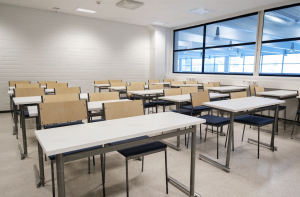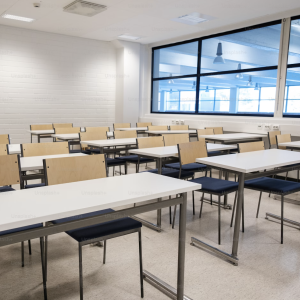Christelle Dorvil • Oct 29, 2024

(Kübra Arslaner/UNSPLASH)
This fall semester multiple post secondary institutions in Ontario saw a decrease in enrolment from international students.
Mohawk College’s campuses record only receiving about 1,500 international students in the fall, a 38 per cent decrease from the year prior. St.Lawrence College in Kingston reports that 1,600 students were expected to attend but only 775 students have enrolled in courses for this term.
They state many students haven’t received their Visas on time, but there’s a lot to unpack on what’s hindering them from their studies.
In January, Immigration Minister Marc Miller announced Ottawa would reduce the number of international student permits by 35 per cent as part of a temporary two-year cap.
So this year, post-secondary schools have implemented stricter Visa requirements including the need to submit a provincial attestation letter or a territorial attestation letter to Immigration, Refugees and Citizenship Canada.
The attestation letters must be provided with their study permit application or their application will be returned. This whole process seems to have caused delays for multiple international student Visas.
The sharp decline in international student enrolments can also be attributed to work permit restrictions.
Post-Graduation Work Permits (PGWPs) will now only be given to college students who study in fields with labour shortages, like STEM programs. This means that international students who have applied to Canadian programs that are not eligible for a work permit may be rethinking their choice of pursuing education in Canada.
According to the Government of Canada, work permits offered to spouses of the students will also be restricted to spouses of master’s or doctoral studies. Any other level of education will not be approved.
Canada’s new international student policies have clearly played a role in this year’s low international student enrolments, and the policies are coming at a time where the country faces growing anti-immigration sentiments around the cost of living.
Immigration increased during the pandemic in order to address labour shortages. The Prime Minister intends on cutting immigration levels within the next few years after stating his government “didn’t get the balance quite right.”
This will be done in order to allow provinces to catch up on healthcare and housing stock. In January, the Government of Canada issued a news release informing the public of their intentions to reduce the number of international student permits.
They cite a lack of support the students receive as well as the pressure they put on housing and healthcare. Statistics Canada reports that over half of people aged 25 to 44 say that rising prices are greatly affecting their day-to-day expenses, as well as 46 to 47 per cent having high financial stress and expectations to obtain food from a food bank.
To apply for a study permit the cost of living requirement has been set at $10,000 since the early 2000s, but this year it’s being re-evaluated. New requirements were put in place in order to better reflect Canada’s cost of living.
The government states that a single applicant must have $20,635 in addition to first year tuition and travel cost. This measure was put into place to prevent international students from being vulnerable and exploited upon coming to Canada, according to Canadian immigrant magazine.
International students’ families face troubles finding housing that fits their needs due to lack of diverse options. One family reported to the University of Waterloo’s Faculty of Environment that they were living in an Airbnb because they needed to find a place where their kids could start school.
Other countries such as the United states and United Kingdom have subsidized housing for international students
Students’ mental health has also been impacted by the uncertainty of immigration policies and permits, and they’re further impacted by limitations of income earned and job opportunities.
Ontario is seeing big changes in its post-secondary institutions. According to the Borden Ladner Gervais law firm, the province hosts over 50 per cent of the international students in Canada.
Conestoga College has reported that 1400 of their international students have deferred their programs to the winter semester.
With these changes one could assume students are waiting to see how these changes officially unfold and affect their likelihood of becoming a permanent resident, deferring and weighing the benefits of pursuing an education in Canada.
But the students aren’t the only ones who are feeling disoriented by these restrictions, universities and colleges are also feeling a financial kind of loss. According to a 2022 provincial auditor general report, Ontario international students make up 68 per cent of tuition revenue at 24 Ontario colleges… and over 90 per cent at some Northern Ontario colleges.
The Council of Ontario Universities says the Federal limits could cost Ontario schools close to one billion dollars in lost revenue.

